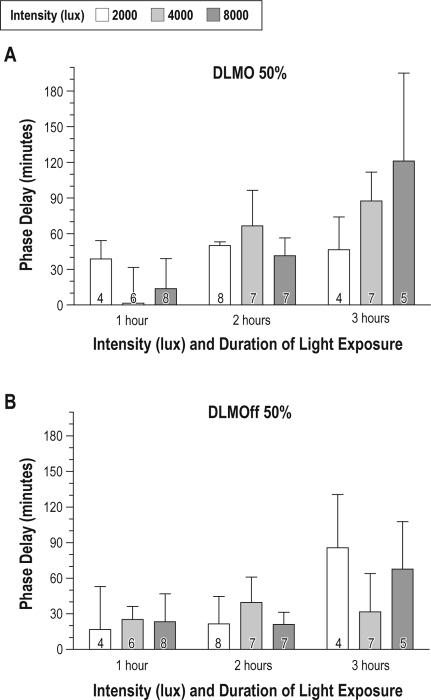Figure 4.
Magnitude of light-induced phase delays of the (A) dim light melatonin onset (DLMO 50%) and (B) dim light melatonin offset (DLMOff 50%) following exposure to various intensities (2,000, 4,000, or 8,000 lux) and durations (1, 2, or 3 hours) of light exposure (± SD). Phase shifts were calculated as the change in the time of the phase markers on the baseline and post-treatment nights. In order to determine the magnitude of the phase delay attributed to light, the phase change on each subject's control admission (awake for the same periods in dim light) was subtracted from the phase change following light exposure. Analysis by 2-way ANOVA revealed a significant effect of duration (P = 0.01) but not intensity for the magnitude of phase delays of the DLMO 50%; there was no interaction between the 2 factors. The number at the base of the bar denotes the number of subjects for that condition.

